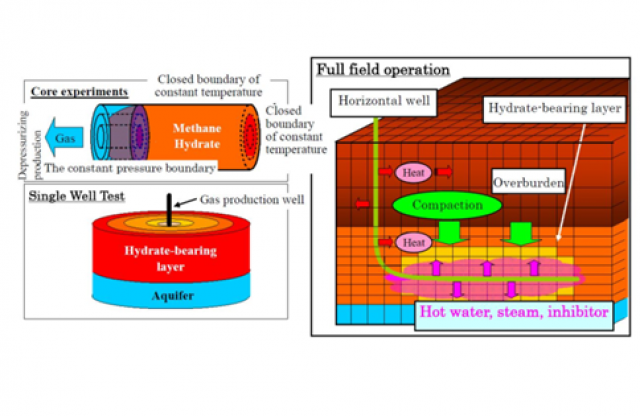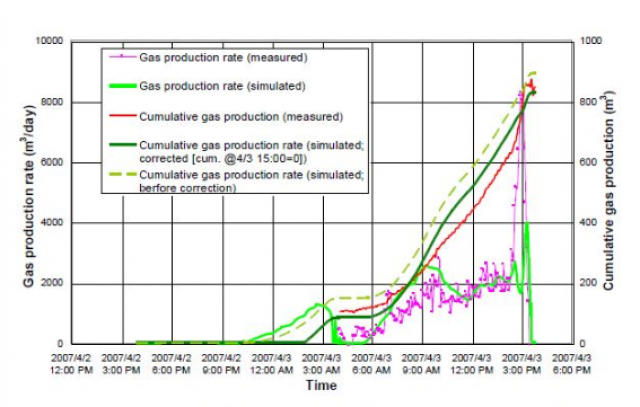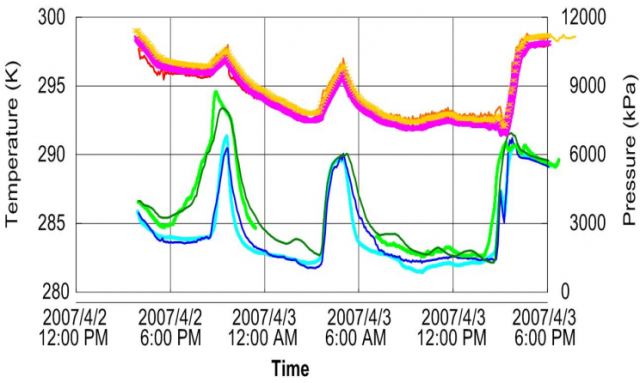- HOME >
- Experiences >
- Field Experiences >
- Japan >
- Methane hydrate development-related projects
Methane hydrate development-related projects
Figure 2. History Matching of Gas Production in the First Winter Test of the Second Onshore Production Test (FY 2007) (from MH21 Phase 1 overall working report)
- Country:
- Japan
- Year:
- 2002 - Ongoing
Methane hydrate (MH), which is stable as solid under the high pressure and low temperature condition shown in such as geological formations below the seafloor deeper than 500 m, is thought to be one of new gas resources. Today, based on petroleum reservoir engineering, several methods to produce MH from geological formations are proposed, such as “depressurization method” and “hot water injection method”. Research Consortium for Methane Hydrate Resources in Japan (MH21) has developed the numerical reservoir simulator “MH21-HYDRES” designed for simulations of production in a MH reservoir. Our company has been contributing to the development of the simulator with our experiences in developing various types of numerical reservoir simulators for conventional oil and gas productions (Figure 1).
MH21-HYDRES was used to predict gas and water productions during the second onshore gas production test at Mallik site in Mackenzie Delta in Northwest Territories of Canada. Also, such prediction results were utilized for the design of wells and surface instruments and their operational guidelines, etc. In addition, by using MH21-HYDRES to analyze the results of the production after the test, the followings were found: the improvement of permeability induced by sand production which occurred in the formations during gas production, unstable wellbore inflows and etc (Figure 2, 3).
In the first offshore gas production test held at the eastern Nankai Trough of Japan in March, 2013, we contributed to the evaluation of MH reservoir, the building of 3D geological model, the prediction of gas and water production performances and etc. The reservoir model which was updated so as to explain production data observed during the test will be utilized for the prediction of gas and water productions during a long-term production test in the future.
【References】
Research Consortium for Methane Hydrate Resources in Japan, Phase 1
Comprehensive Report of Research Results
Copyright© Japan Oil Engineering Company Ltd. (JOE), All Rights Reserved








